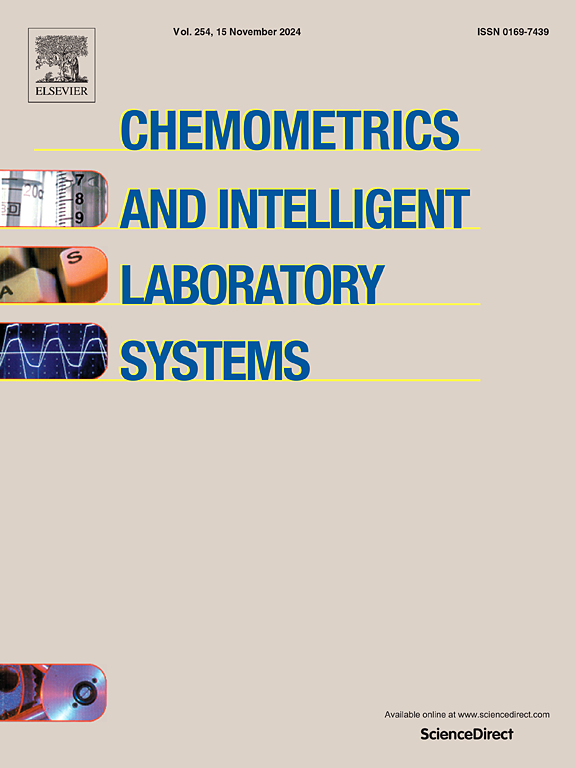Bayesian optimization for interval selection in PLS models
IF 3.8
2区 化学
Q2 AUTOMATION & CONTROL SYSTEMS
Chemometrics and Intelligent Laboratory Systems
Pub Date : 2025-10-10
DOI:10.1016/j.chemolab.2025.105541
引用次数: 0
Abstract
We propose a novel Bayesian optimization framework for interval selection in Partial Least Squares (PLS) regression. Unlike traditional iPLS variants that rely on fixed or grid-based intervals, our approach adaptively searches over the discrete space of interval positions of a pre-defined width using a Gaussian Process surrogate model and an acquisition function. This enables the selection of one or more informative spectral regions without exhaustive enumeration or manual tuning. Through synthetic and real-world spectroscopic datasets, we demonstrate that the proposed method consistently identifies chemically relevant intervals, reduces model complexity, and improves predictive accuracy compared to full-spectrum PLS and stepwise interval selection techniques. A Monte Carlo study further confirms the robustness and convergence of the algorithm across varying signal complexities and uncertainty levels. This flexible, data-efficient approach offers an interpretable and computationally scalable alternative for chemometric applications.
PLS模型中区间选择的贝叶斯优化
我们提出了一种新的贝叶斯优化框架,用于偏最小二乘(PLS)回归的区间选择。与依赖于固定或基于网格的间隔的传统iPLS变体不同,我们的方法使用高斯过程代理模型和获取函数自适应地搜索预定义宽度的间隔位置的离散空间。这使得一个或多个信息光谱区域的选择没有详尽的枚举或手动调谐。通过合成和真实光谱数据集,我们证明了与全光谱PLS和逐步区间选择技术相比,所提出的方法一致地识别化学相关区间,降低了模型复杂性,提高了预测精度。蒙特卡罗研究进一步证实了该算法在不同信号复杂性和不确定性水平下的鲁棒性和收敛性。这种灵活、数据高效的方法为化学计量学应用提供了一种可解释和计算可扩展的替代方案。
本文章由计算机程序翻译,如有差异,请以英文原文为准。
求助全文
约1分钟内获得全文
求助全文
来源期刊
CiteScore
7.50
自引率
7.70%
发文量
169
审稿时长
3.4 months
期刊介绍:
Chemometrics and Intelligent Laboratory Systems publishes original research papers, short communications, reviews, tutorials and Original Software Publications reporting on development of novel statistical, mathematical, or computer techniques in Chemistry and related disciplines.
Chemometrics is the chemical discipline that uses mathematical and statistical methods to design or select optimal procedures and experiments, and to provide maximum chemical information by analysing chemical data.
The journal deals with the following topics:
1) Development of new statistical, mathematical and chemometrical methods for Chemistry and related fields (Environmental Chemistry, Biochemistry, Toxicology, System Biology, -Omics, etc.)
2) Novel applications of chemometrics to all branches of Chemistry and related fields (typical domains of interest are: process data analysis, experimental design, data mining, signal processing, supervised modelling, decision making, robust statistics, mixture analysis, multivariate calibration etc.) Routine applications of established chemometrical techniques will not be considered.
3) Development of new software that provides novel tools or truly advances the use of chemometrical methods.
4) Well characterized data sets to test performance for the new methods and software.
The journal complies with International Committee of Medical Journal Editors'' Uniform requirements for manuscripts.

 求助内容:
求助内容: 应助结果提醒方式:
应助结果提醒方式:


